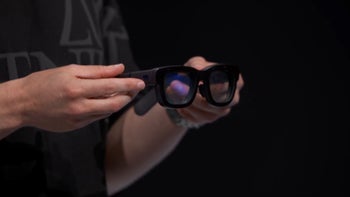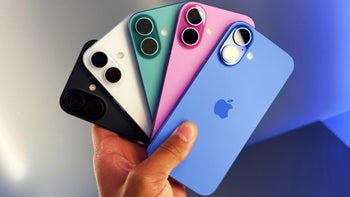This jump in haptic glove tech may translate into the next step up for immersive VR

Here’s the deal: even some of the best VR headsets like the Quest 3, don’t come in complete packages. Oftentimes, due to personal preference or just plain biology, enthusiasts will need to turn to third party solutions to improve their XR experience.
But what happens if you want to enhance it further?
Well, it’s not like there aren’t options. There’s the little things like more comfortable straps, better controllers and alternative facial interfaces. Then you can step it up a notch or ten and invest in a VR treadmill and a pack of accurate body-tracking sensors.
But what about gloves? The idea of the haptic glove isn’t new to the realm of XR, but not a single solution — few of which have ever reached consumers in a meaningful way, by the by — has ever stuck a landing in a way that makes an impact.
But Fluid Reality’s innovation may actually start to change that.

Okay, so, let’s start by explaining what a haptic glove actually is. It’s a glove that you can put on and then connect to your VR headset. Then, once you run an app or game that is optimized for haptics, that experience can provide haptic feedback through the glove.
As in, if you are pushing a button in VR, you’ll be able to feel not only a surface, but the resistance of pushing it in as well.
Naturally, something like this goes far beyond simple apps and games. This could have a massive impact on the enterprise side of the VR industry, especially in the realm of training, where immersion is important to gaining a deeper understanding of the material.
So, enter stage left: Fluid Reality — a tech company from the US — and its new-age haptic glove. These gloves aren’t only capable of functioning wirelessly, but also feature 160 dynamic haptic feedback actuators, controlled by a system that is rather compact.
From the tech demo, which you can view in the video above, the gloves are showcased to be compatible with HTC Vive’s hand-tracking products and with the Meta Quest’s built-in hand tracking, available on headsets like the Quest 2 and Quest 3.
So! Great. What’s the challenge then? Well, as you can imagine, it’s not only about making the product real, but also getting people to buy it. And that last bit is directly linked to developers being willing to implement such features into their products.
But the key takeaway here is that haptic gloves are finally becoming a more viable product. Now all that remains is to get more developers and manufacturers aboard and we may be in for an interesting leap in XR tech.
But what happens if you want to enhance it further?
But what about gloves? The idea of the haptic glove isn’t new to the realm of XR, but not a single solution — few of which have ever reached consumers in a meaningful way, by the by — has ever stuck a landing in a way that makes an impact.

Okay, so, let’s start by explaining what a haptic glove actually is. It’s a glove that you can put on and then connect to your VR headset. Then, once you run an app or game that is optimized for haptics, that experience can provide haptic feedback through the glove.
As in, if you are pushing a button in VR, you’ll be able to feel not only a surface, but the resistance of pushing it in as well.
Naturally, something like this goes far beyond simple apps and games. This could have a massive impact on the enterprise side of the VR industry, especially in the realm of training, where immersion is important to gaining a deeper understanding of the material.
From the tech demo, which you can view in the video above, the gloves are showcased to be compatible with HTC Vive’s hand-tracking products and with the Meta Quest’s built-in hand tracking, available on headsets like the Quest 2 and Quest 3.
So! Great. What’s the challenge then? Well, as you can imagine, it’s not only about making the product real, but also getting people to buy it. And that last bit is directly linked to developers being willing to implement such features into their products.
But the key takeaway here is that haptic gloves are finally becoming a more viable product. Now all that remains is to get more developers and manufacturers aboard and we may be in for an interesting leap in XR tech.







Things that are NOT allowed: